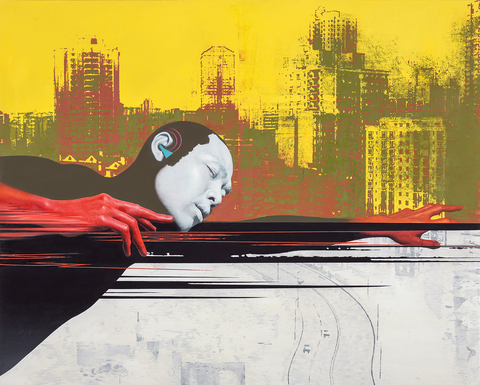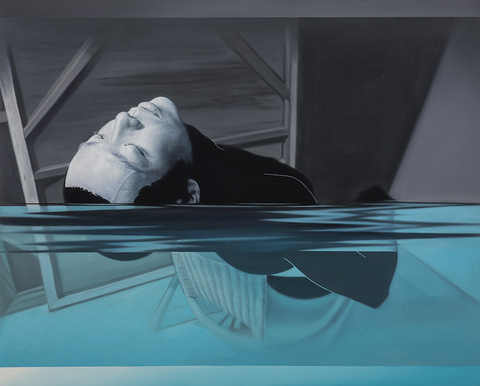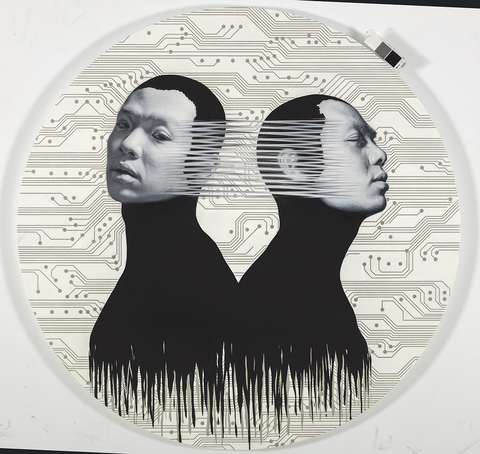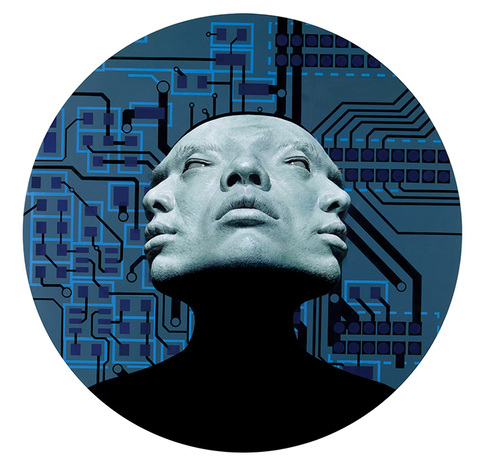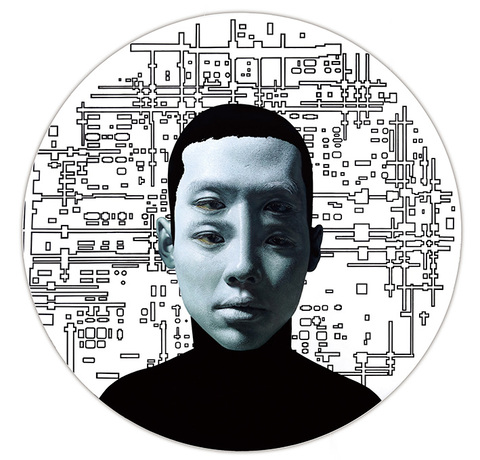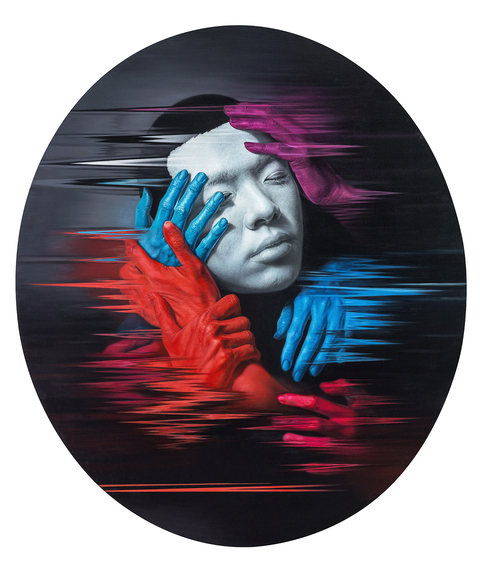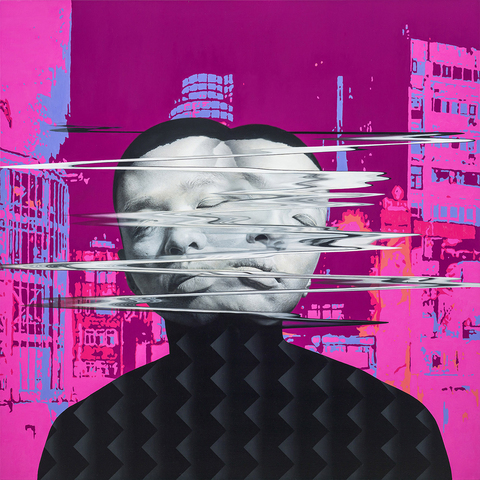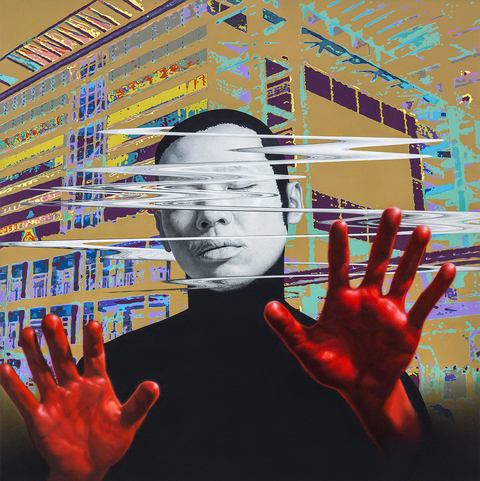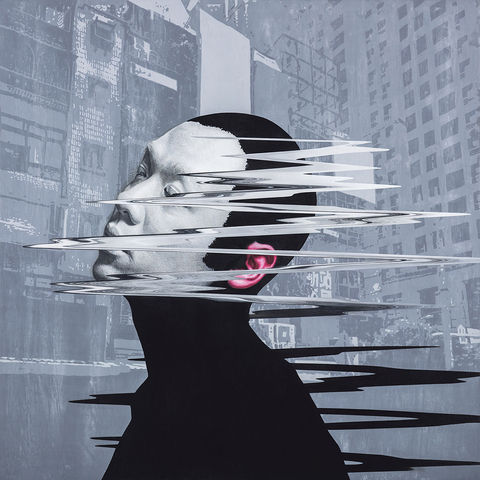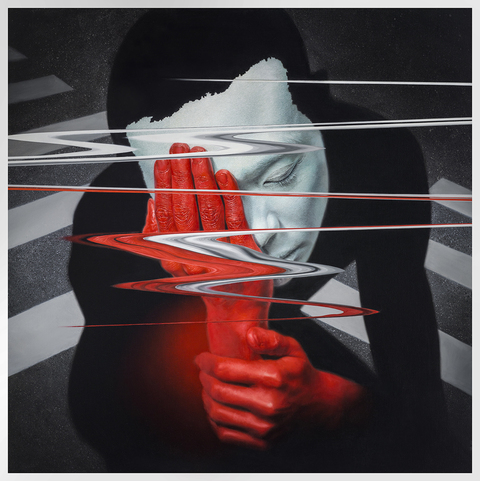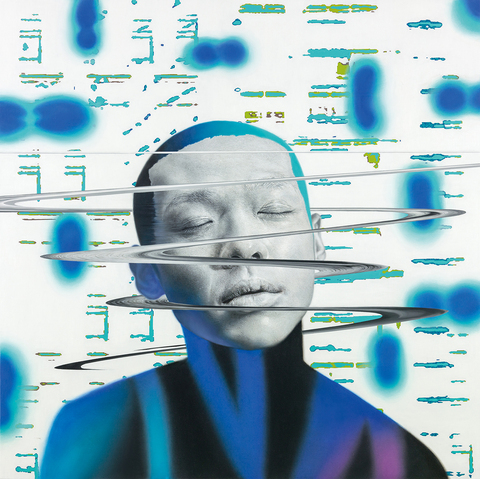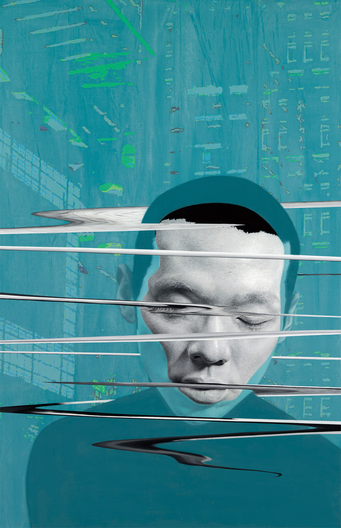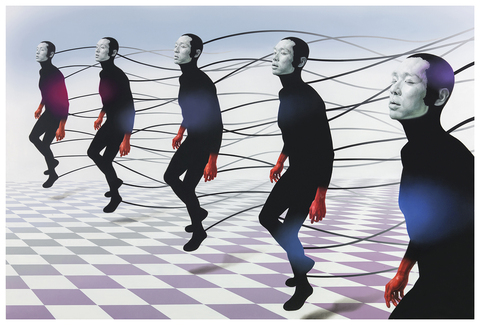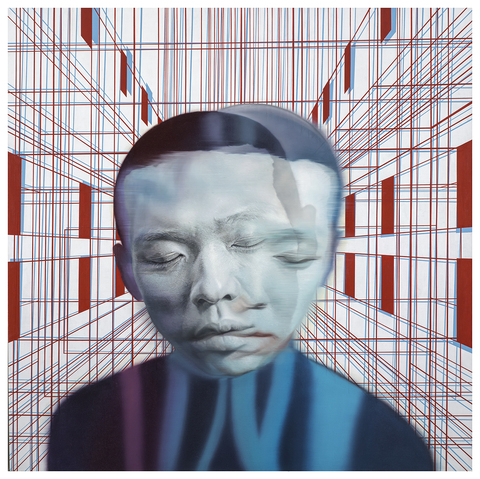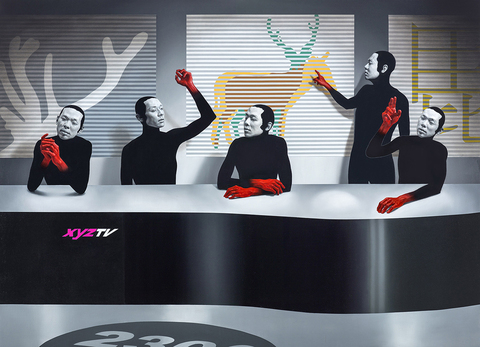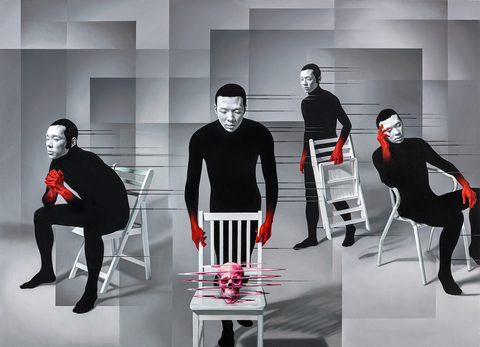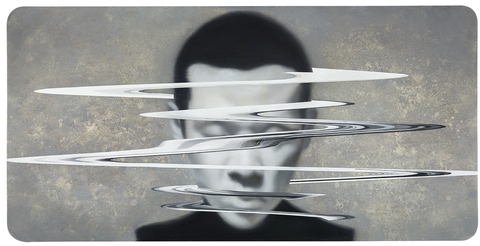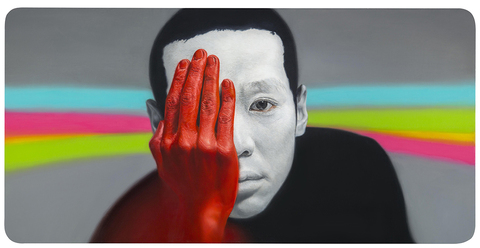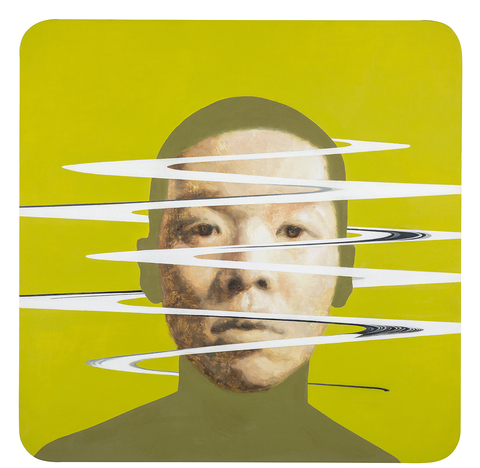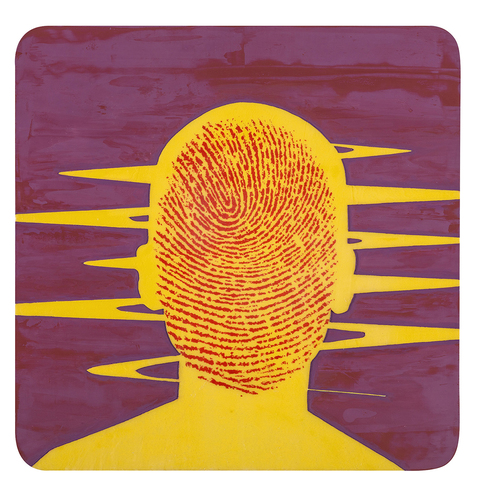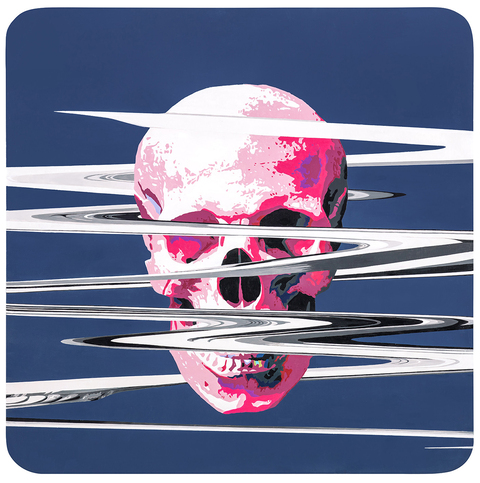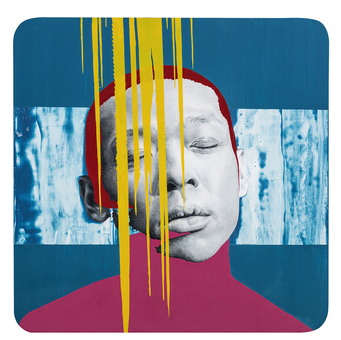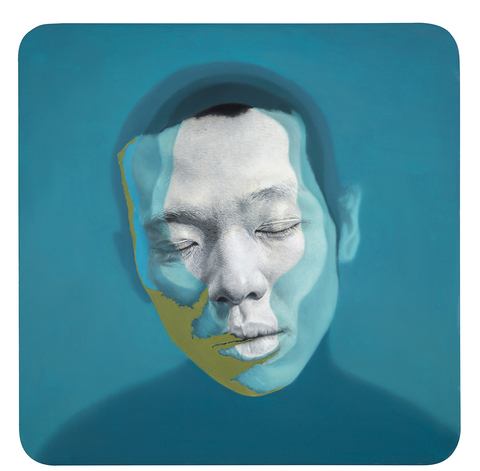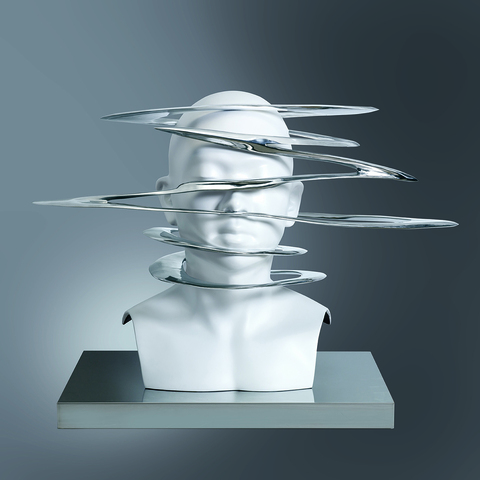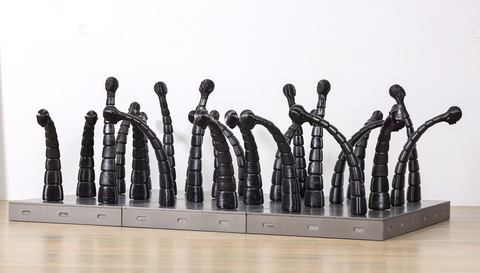晃遊者:微量裂解的總和
A Collection of Microcracks
城市生活的多變、刺激令人炫目產生幻覺,而社會、政治的亂象,使人無法辨別是非,網路成為資訊的重要來源,卻難分真假,令人無所適從,人格與被不斷的微量裂解。雖不至錯亂,但也模糊了每個人的價值判斷。生活在這個繁複的時代,我們必然概括承受這一切,小至每個個體,大至整個社會,都是裂解下的總合。
網路的發達,微博、臉書的出現,改變了閱聽習慣,加速了人與人之間的交流,也拓寬了視野;我們不需要透過任何的交通方式,隨時擷取最新的資訊,不論是對的或錯誤的資訊,即便親眼所見也無以為憑;當然,這也考驗了我們的判斷,甚至沒有時間判斷,囫圇吞棗的被左右著,我們對事物的認知與思慮,也可能存在著不斷變異的可能。你也可以隨時放送個人的動態,建立一種新的形象面貌,影響他人對你的認知標準,建立一個或數個超越真實人格的虛擬角色,而這個角色甚至比真實的你更讓人誤以為真。我們都身處在裂解的狀態,透過社會化的影響,以及受到城市、環境、家庭影響而產生的分裂、質疑與不確定性。
數位科技帶來影像閱聽的時代,拍攝影像不再需要專業攝影,當手機成為生活中不可或缺的一環,我們隨時可以截取或拍攝數以千計的影像;對於景物、事件不再需要透過文字的描述來想望,甚至透過影像處理科技、動畫科技、VR ⋯⋯等,可以輕鬆製造出前所未有的視覺體驗。關於具象繪畫,我所參照不是照片的機械複製,或實體物件的擬仿再現,亦非單純透過視網膜所接收的影像,而是透過影像再製與隨意抓取的數位檔案,重新構作、重組、拼湊,進而產生新的意義與劇情。此次作品,我試圖變異並裂解影像與繪畫的邊線,大量地利用影像處理效果,置入繪畫之中;抽離並改變色調,畫面背景被刻意解構與簡化,幻化了城市的喧囂。而人物也透過變造或複製,甚至抹除、變形臉孔與表情,原有的情緒也被扭曲而重新定義。不真實的、刻意改變的景深,並存於畫面,透過寫實繪畫的處理,讓它似是而非的存在,誤導著觀眾的視網膜,使其信以為真。這裡指涉的「寫實」,並不指對於真實物件的再現,而是對於虛擬的視頻影像的擬仿。單色調的人物與鮮豔跳動的環境背景不搭嘎地並存著,保留了個體與城市的分野,又透過局部扭曲變形的線條,不斷切割與裂解彼此,也矛盾的串聯著;一搭一唱地演出弔詭的劇情,類比著當代虛擬化、超越自然體驗的生活。
The changing and stimulating city life has provoked dazzling hallucinations, while social and political chaos has precluded people from seeing the difference between right and wrong. The Internet has become an important source of information causing people to be at a loss when trying to distinguish true from false. Under the influence of these affects, personalities are unceasingly microcracking, everything is in disorder and everyone’s value judgement is indistinct. Either each and every individual or society as a whole, all of us inevitably endure all of these situations in this complex era. Everything has become a collection of microcracks.
The development of the Internet, including the invention of Weibo and Facebook, has changed our habits of reading and listening, accelerated interpersonal communication and broadened our horizons. No matter whether it is right or wrong information, whether there are any proofs for the things we see and absorb or not, we can retrieve the latest information at any time without moving anywhere. Without doubt, this also tests our ability of making decisions. When there is no time to make a decision, we lap up information without comprehension what results in the constant variations of our perception and contemplation of things. You can always disclose your status updates, create a new image of yourself, influence others attitude towards you or establish one or even more virtual profiles, which do not reflect your real personality and can get others to take the lies as truth. All of us are living in the state of cracking, in which disunion, doubt and uncertainty is generated by socialization processes as well as various influences of the city life, environment and family.
Digital technology has brought forth an era where the image can be read and listened to. Taking pictures no longer requires professional photography, the mobile phone has become an indispensable part of our lives, moreover, we can take thousands of pictures anytime we want. Text description is no longer needed to make one long for sceneries or happenings. Anyone can easily create an unprecedented visual experience by means of image processing, animation, VR, and others. In terms of figurative painting, what I am referring to is neither mechanical reproduction of a picture, nor simulated representation of an object or an image simply captured by retina. By means of image reproduction I reconstruct, recombine and piece together randomly seized digital files, thus bringing forth new meaning and story. I attempt to modify and crack the contours of the image and the painting for which I greatly apply image processing effects. I also change color tones, meticulously deconstruct and simplify the background of the paintings, decorate it with the clamor of the city. I aim to alter or reproduce the figures, efface and deform face and facial expressions, depict distorted and redefined emotions. The unrealistic and painstakingly altered depth of field simultaneously coexist in my artworks. Paradoxical presence is constructed by realistic expression, which easily misleads the viewers and enables them to accept the paradoxical view as real. “Realism,” which I am referring to does not imply the reproduction of real objects, it is more an imitation of a video image. Monochromatic figures and bright ambient background are not matching, and yet they coexist together, thus emphasizing the distinction between the individual and the city. Partially distorted lines constantly cut and collide with each other and submerge in contradictions. The paradoxical story draws an analogy of contemporary virtualization and exceeds the natural life experience.
